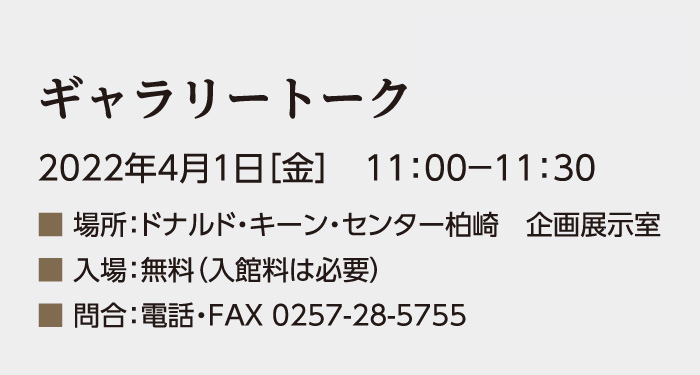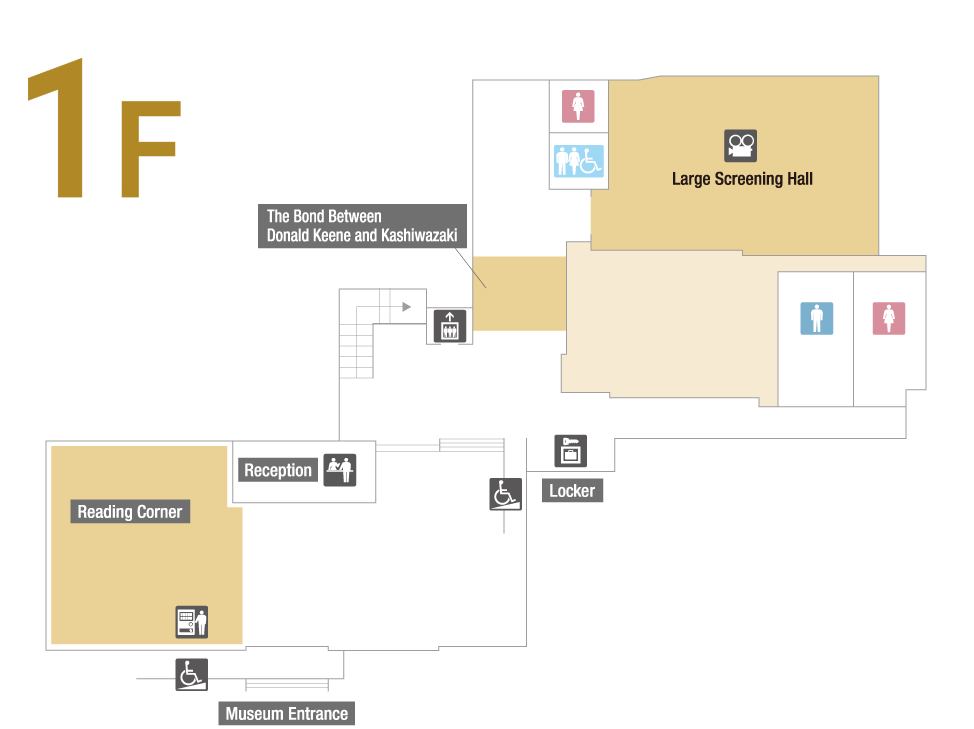
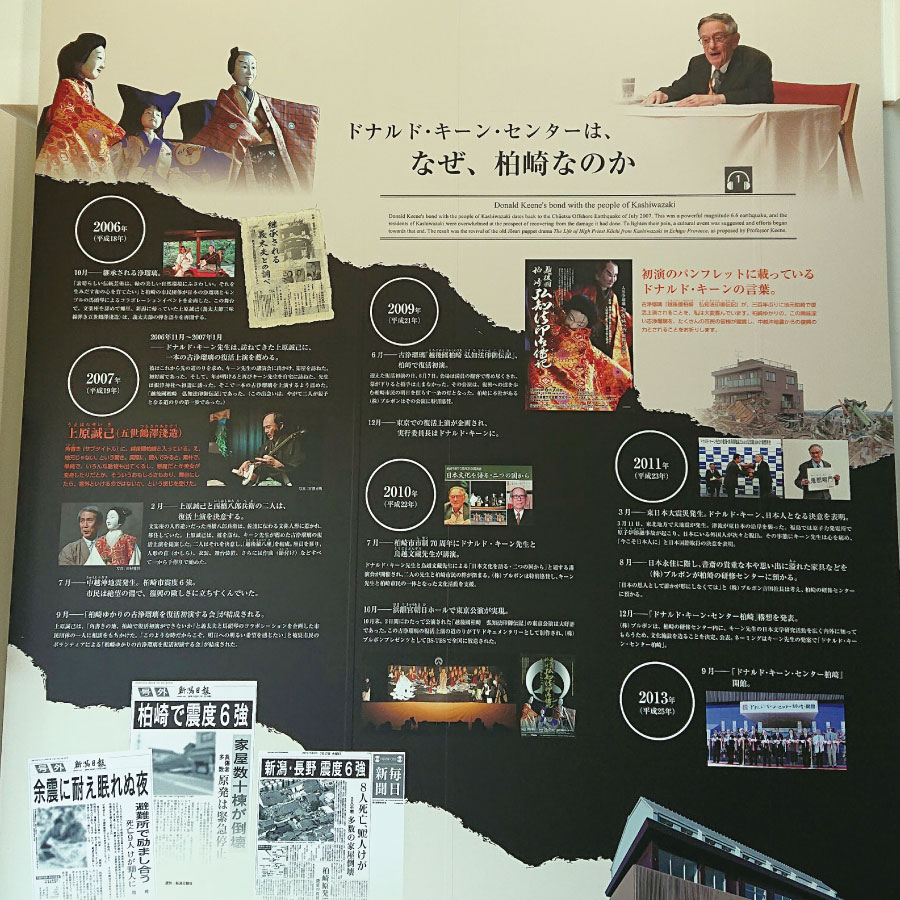
Donald Keene’s encounter with
the people of Kashiwazaki
– the Chuetsu Offshore Earthquake
Professor Donald Keene’s encounter with the people of Kashiwazaki dates back to the Chuetsu Offshore Earthquake of July, 2007 which registered a high seismic intensity of a strong 6 on Japan’s shindo scale. The residents of Kashiwazaki were overwhelmed at the prospect of recovering from the powerful quake. To lighten their pain, a cultural event was suggested and the residents began efforts towards its realization. The result was the revival performance of the ancient ballad drama The Life of Kōchi, the Holy Monk of Kashiwazaki in Echigo as proposed by Professor Keene.
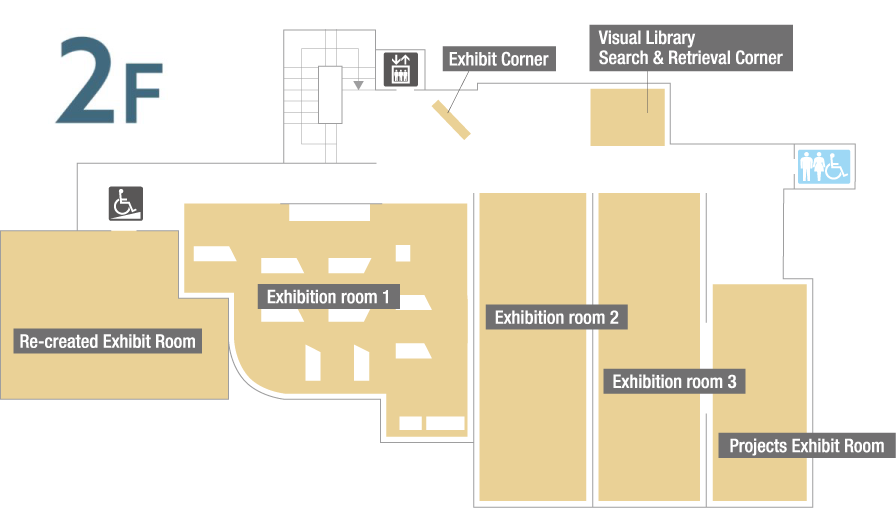
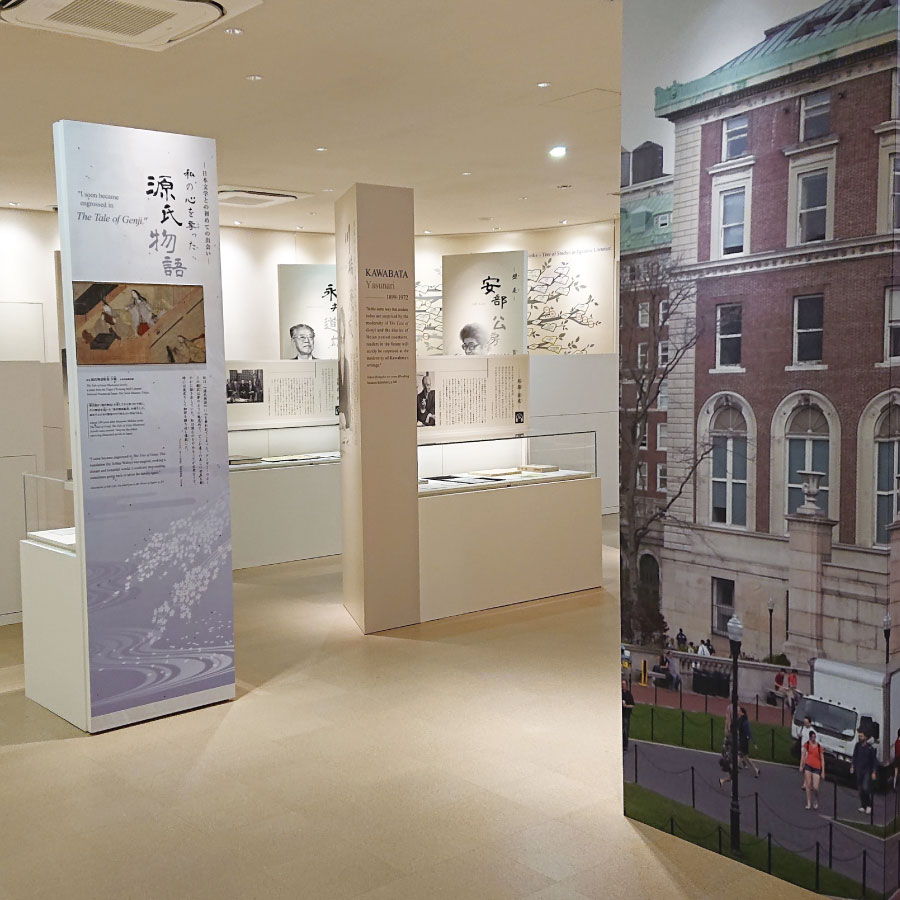
Exhibition Room 1
Chronology of the Life of Donald Keene
Dividing his life from 1922, when he was born, to 2019, when he died, into nine periods, the exhibition introduces his research into Japanese literature, contemporaneous historical events, and various episodes of interest, as well as rare photos.
First encounter with Japanese literature
– The Tale of Genji
In 1940, 18-year-old Donald Keene came upon a two-volume set of the 11th century Japanese novel The Tale of Genji translated by Arthur Waley at a bookstore in New York’s Time Square. They were on sale for 49 cents. Amidst the ominous rumblings of World War II, the young Keene began reading the books. It was a fateful encounter that would set the course of his life.
A graphic representation of Donald Keene’s human
qualities and his affection for Japan
The exhibition shows how Donald Keene interacted with a variety of people, from authors of the past like Chikamatsu Monzaemon to contemporaries like Nagai Michio and Mishima Yukio. The world he created through his research is revealed from the four perspectives of research, mentors, friends, and writers he met in Japan. Other exhibits include a diorama showing events that convey Donald Keene's human qualities, as well as his major writings and his qualities as an educator.
Exhibits
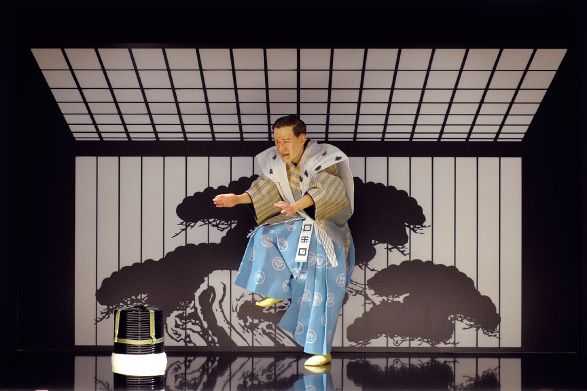
An educator who promoted studies in Japanese literarture
– Portrait of those who follow in his footsteps
The Blue-Eyed Tarōkaja
In 1953, when he realized his dream of studying in Japan he chose Kyoto University because of the ancient history of Kyoto itself. He began to broaden his knowledge of Japanese culture, much of it impossible to learn abroad. He studied calligraphy at the Chishaku-in, a temple near where he lived. He was deeply impressed by the performances of Noh he saw, but in the end thought it would be more fun to study Kyōgen, the comic plays that are performed together with Nōh. He studied Kyōgen with Sennojō Shigeyama, the son of the head of the Okura School in Kyoto. A bit of his performance of Tarōkaja on September 13, 1956 at the Kita Noh Theatre in Tokyo has been preserved.
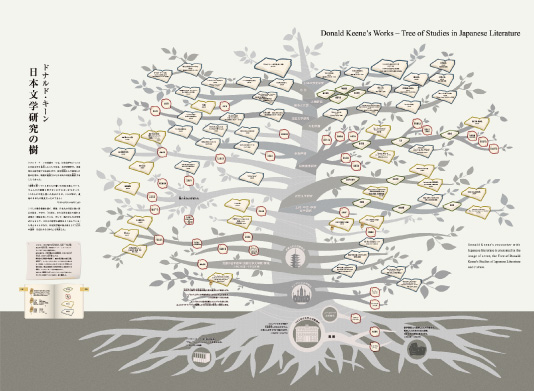
Donald Keene’s Works
– Tree of Studies in Japanese Literature
Donald Keene's encounter with Japanese literature is presented in the image of a tree, the Tree of Donald Keene's Studies of Japanese literature. It includes his representative works up to the present.
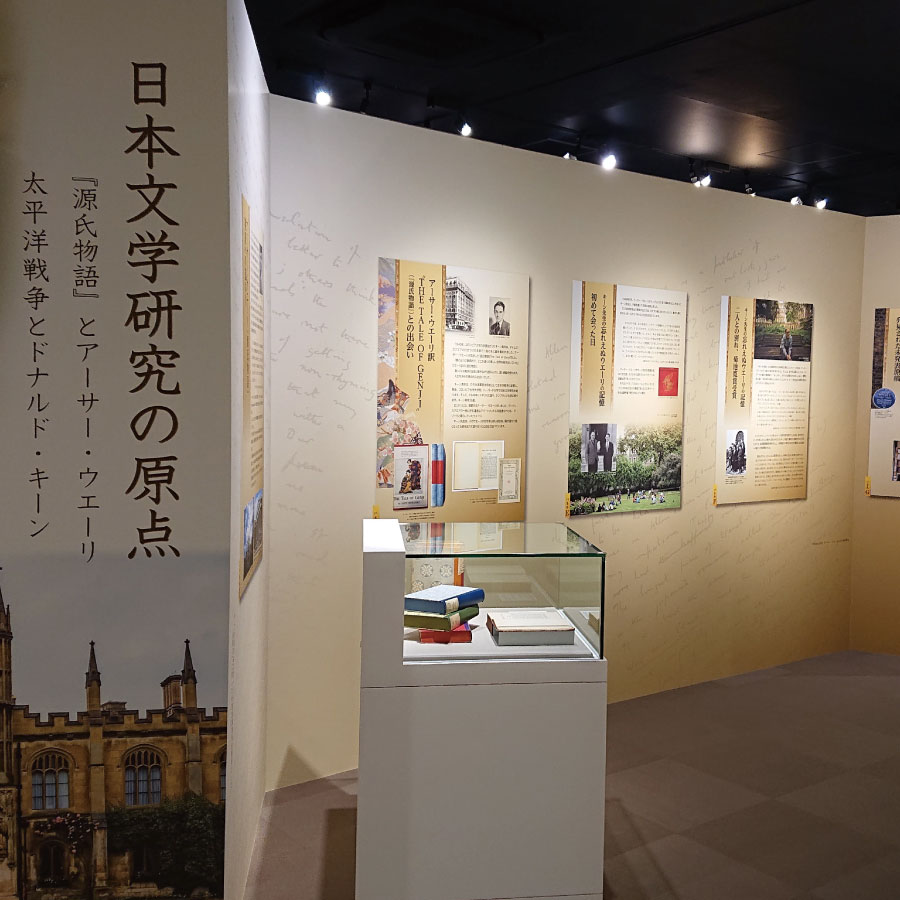
Exhibition Room 2
The Tale of Genji and Arthur Waley:The beginning of his study of Japanese literature
The Tale of Genji, which Arthur Waley published in 6 volumes from 1925 to 1933, made a great impact on the literary world in Europe and America. Reviews in major newspapers and magazines praised Waley’s translation to the skies.
World War II and Donald Keene: The beginning of his study of Japanese literature
As a language officer during the Pacific War, one of Donald Keene’s most important duties was translating the diaries and letters of Japanese soldiers. As he became immersed in the diaries of Japanese soldiers who had died in the fierce fighting on the island of Guadalcanal, he was deeply moved by the thoughts and feelings that they expressed.
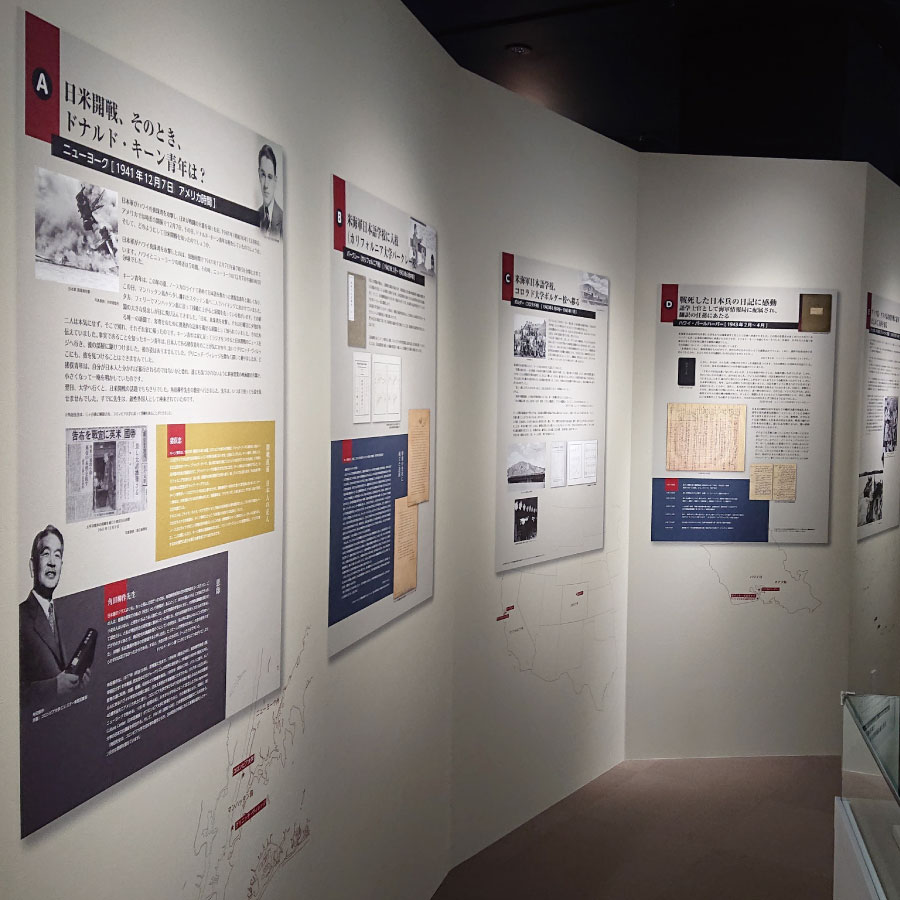
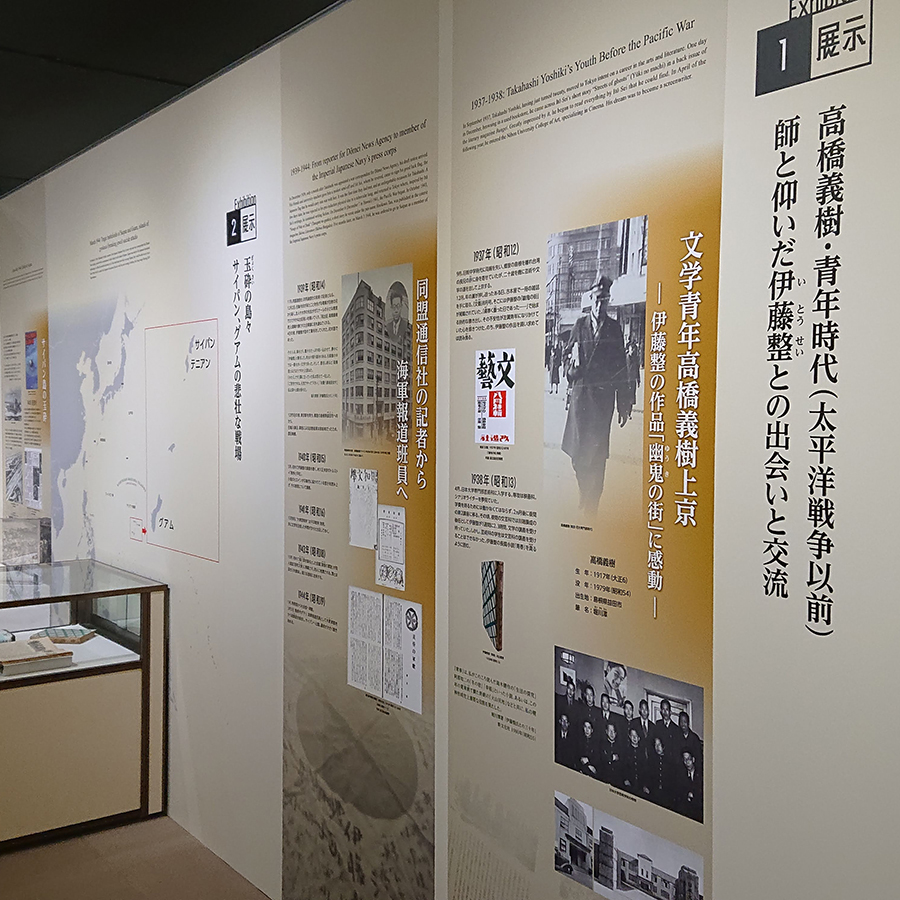
Exhibition Room 3
Takahashi Yoshiki Collection
Message to the Future
The Pacific War of Takahashi Yoshiki and Donald Keene
The events that occurred at the Hawaii camp for Japanese POWs on the eve of the war’s end were almost unknown, but his numerous works, such as ❝The Fatal Eggs❞ , ❝Symphony No. 3❞ , and ❝How the war ended in Pearl Harbor❞ , which are closely based on them are valuable materials from both a literary and historical perspective.
In addition to these works based on the Pacific War of the Japanese, the Takahashi Yoshiki Collection includes Thirty Years with Itō Sei, which depicts his interactions with the writer and critic Itō Sei, whom he looked up to as a mentor throughout his life, and also a variety of works from his career as a journalist, including books, newspapers, magazines, photographs, and audio tapes. In all, the Collection contains approximately 1100 items.
Restored Study Exhibit Hall
Professor Keene lived on the eleventh floor of an apartment building facing the Hudson River, close to Columbia University. The study where he wrote many of his books was also a place where he welcomed friends. The Exhibit Hall enables the visitor to experience the atmosphere that surrounded Professor Keene when he was studying and writing about Japanese literature.
The exhibit provides an overview from various perspectives of Professor Keene’s long devotion to disseminating to many countries the splendors of Japanese literature and culture.
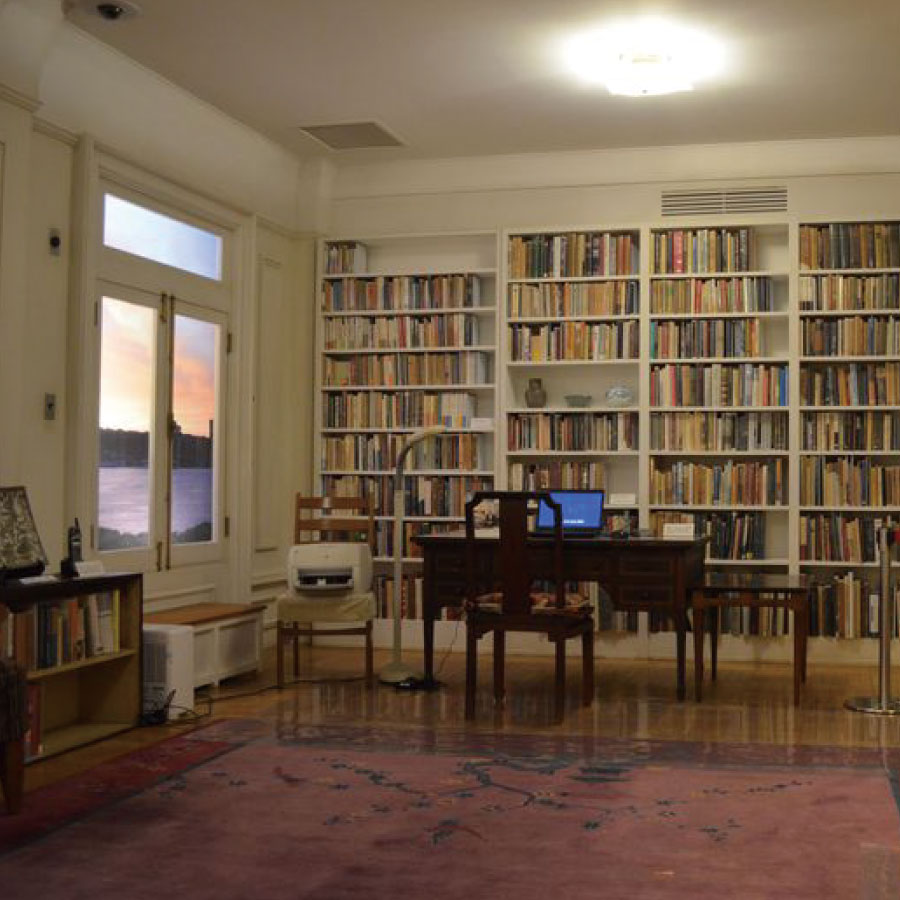
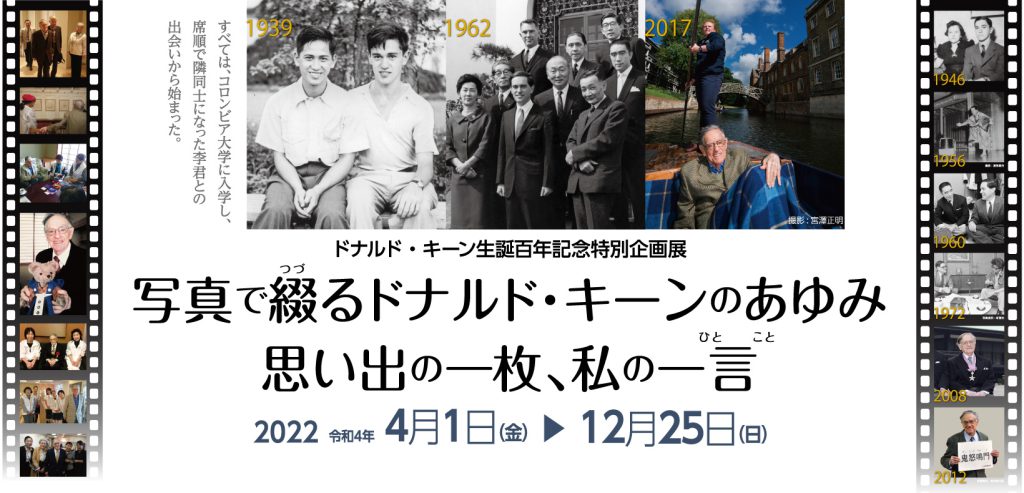
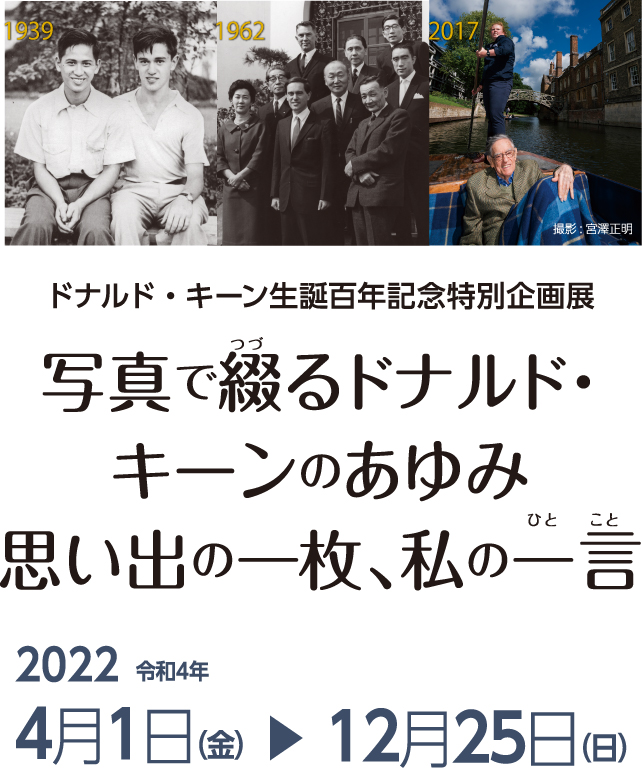

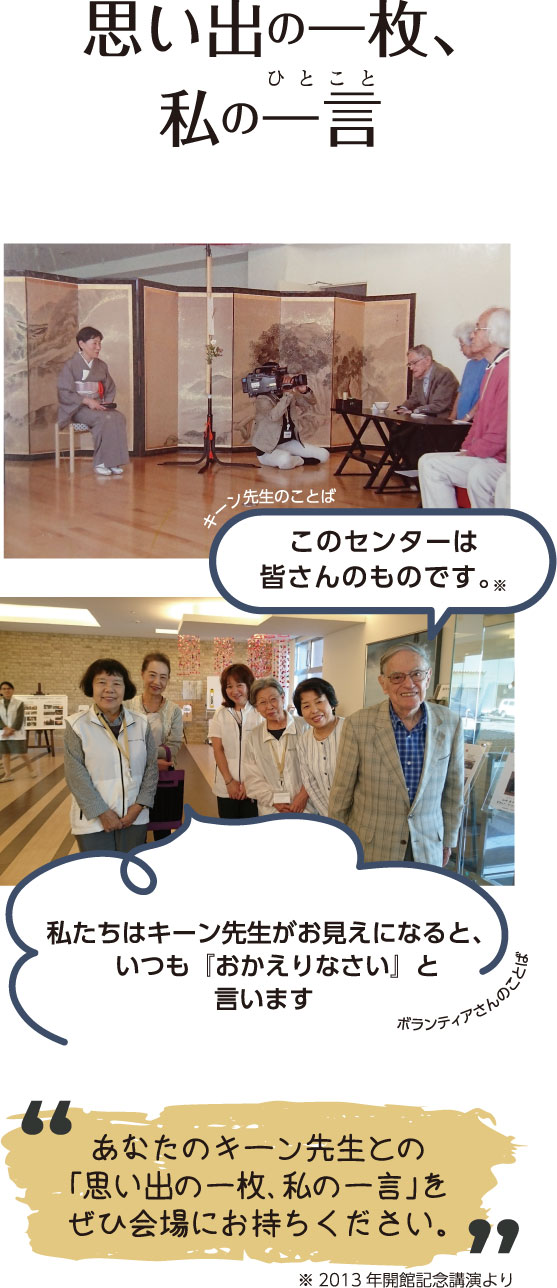
 1940年、源氏物語と運命的に出会い、以来、80年近くの年月、日本文学研究の道を一筋に歩み続けたドナルド・キーンの人生。
1940年、源氏物語と運命的に出会い、以来、80年近くの年月、日本文学研究の道を一筋に歩み続けたドナルド・キーンの人生。
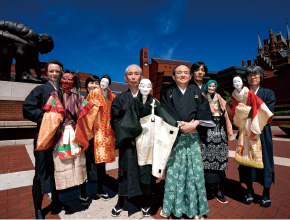 公演を終えて 猿八座一座と越後角太夫
撮影: 宮澤正明
公演を終えて 猿八座一座と越後角太夫
撮影: 宮澤正明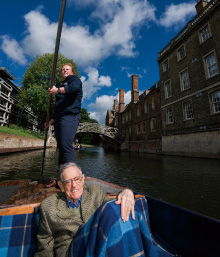 ケム川から
撮影: 宮澤正明
ケム川から
撮影: 宮澤正明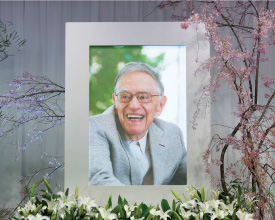 お別れの会 青山葬儀場にて
お別れの会 青山葬儀場にて
